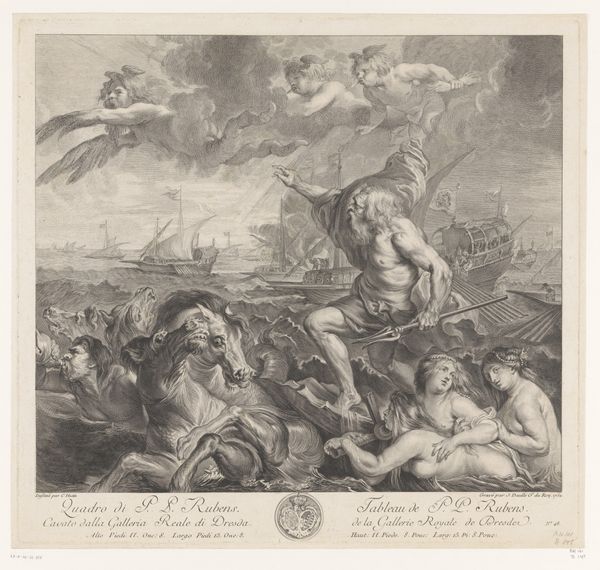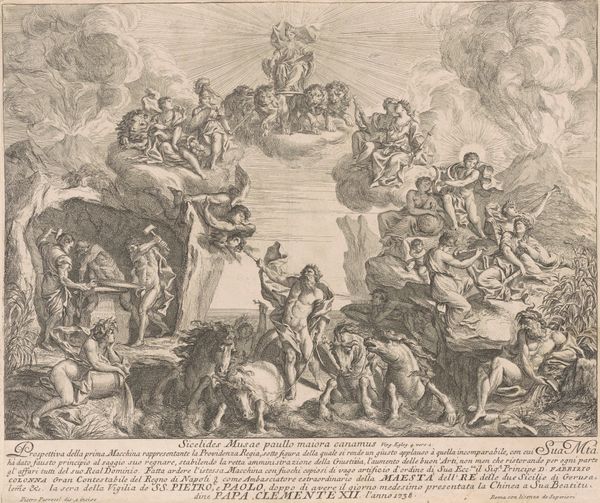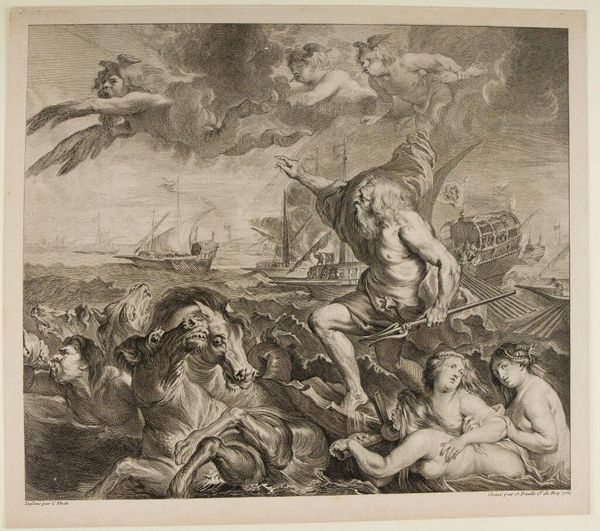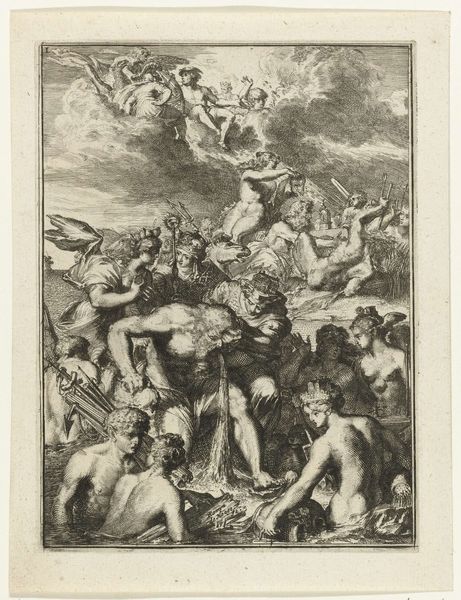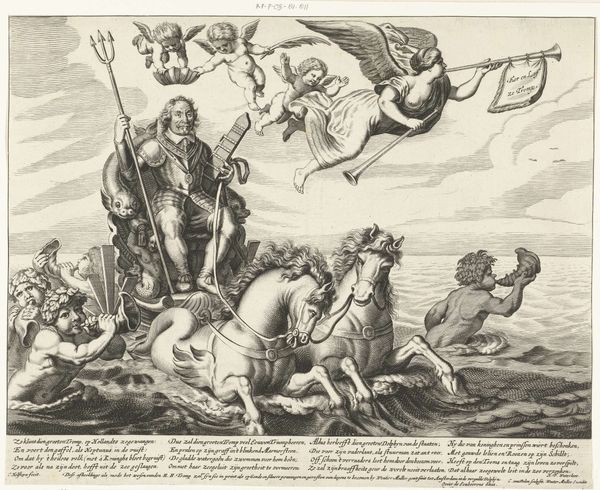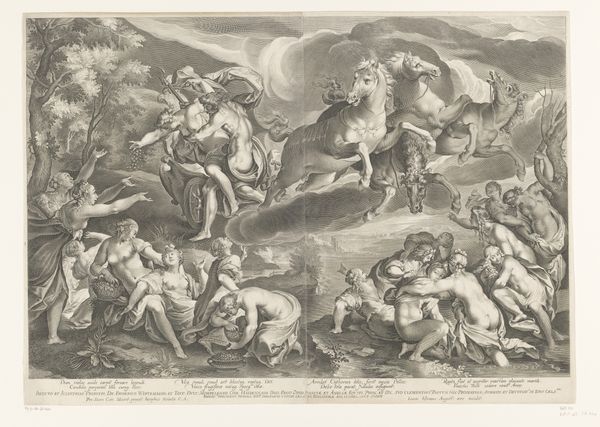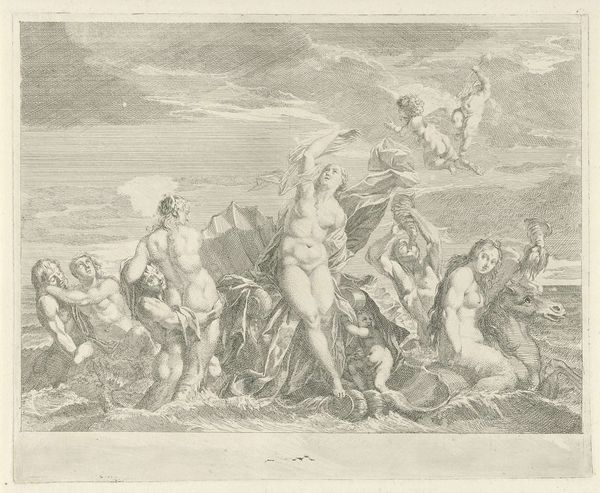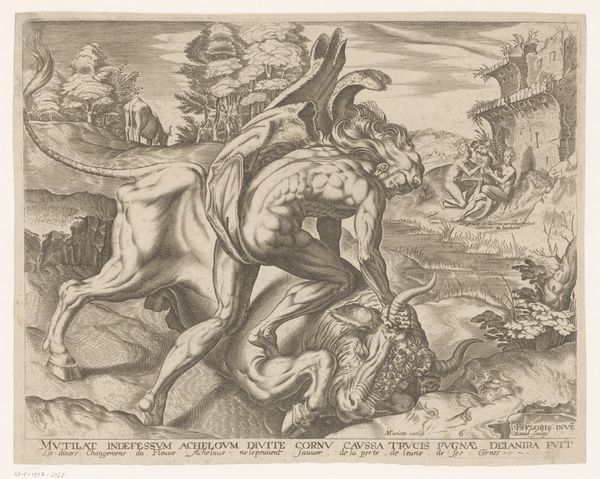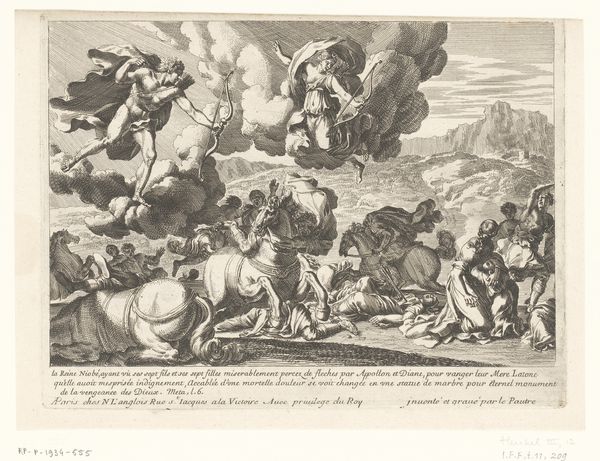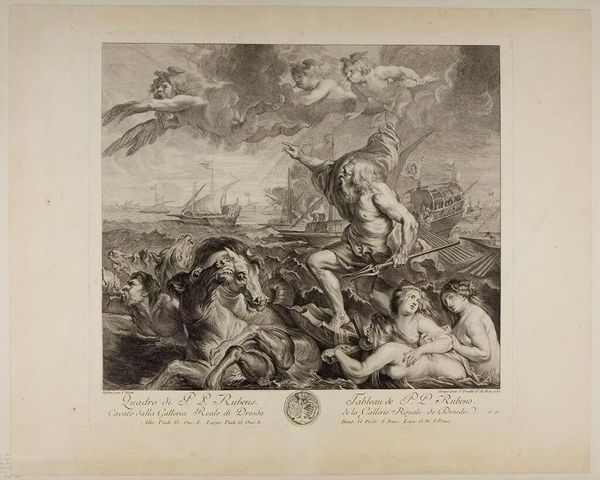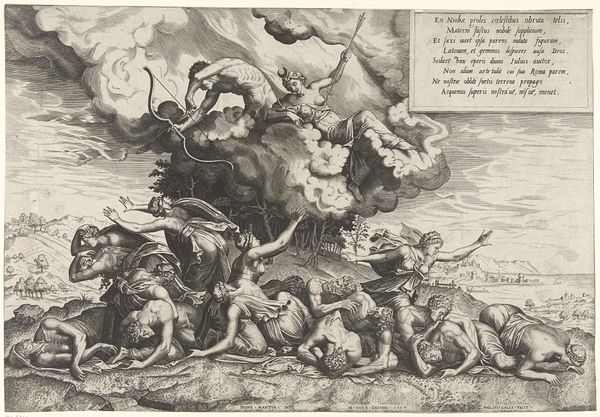
De tocht van Barcelona naar Genua; intocht van Ferdinand te Antwerpen in 1635 (nr. 7) 1642
0:00
0:00
print, engraving
#
ink drawing
#
baroque
# print
#
pencil sketch
#
landscape
#
figuration
#
line
#
history-painting
#
engraving
Dimensions: height 278 mm, width 340 mm
Copyright: Rijks Museum: Open Domain
This print, made by Theodoor van Thulden, depicts Ferdinand's voyage to Antwerp in 1635. It was created using the technique of engraving, where lines are incised into a metal plate, which is then inked and printed. Look closely, and you'll notice the intricate detail achieved through this process. The varying thickness and density of lines create a range of tones and textures, from the billowing clouds to the churning sea. Engraving demands precision and control, but also allows for a remarkable level of expressiveness. Prints like these were often produced in multiples, making images more widely accessible in a pre-photographic era. They served not only as artworks, but also as a form of documentation and propaganda. Consider the amount of labor involved in creating such a detailed image, and how this contrasts with its function as a tool for promoting power and authority. It reminds us that even in art, the means of production are never far from the message being conveyed.
Comments
No comments
Be the first to comment and join the conversation on the ultimate creative platform.
